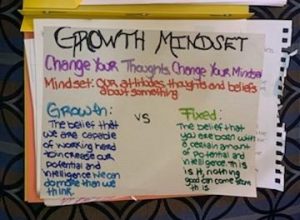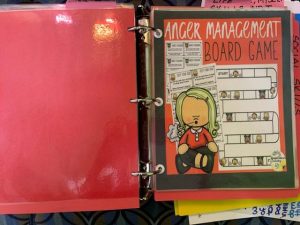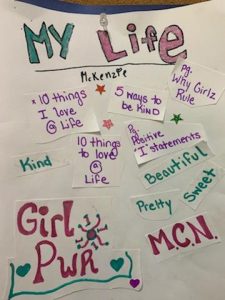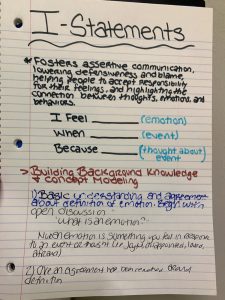Competency 8: Intervene with individuals, families, groups, organizations, and communities
Introduction: Interventions are the strategic tools utilized to assist individuals, families, groups, organizations, and communities to address their problems and meet needs. The overall goal of an intervention is for the client to explore techniques that work best to restore personal power, improve well-being, or prevent further stressors. Interventions are evidence-based and researched to be effective.
8.1 – Implement clinical evidence-based interventions with individuals, families, and/or groups
Course Evidence: To further practice skills as a group therapy facilitator we were to prepare two exercises to incorporate into our pseudo session that aligned with the session’s purpose. To brainstorm a Group Facilitation Demonstration form was utilized. My particular group was for women in substance abuse recovery that are transitioning back home. The exercises I chose to do are “I Am” statement cards and group discussion about the power of words. The purpose of this de-stigmatizes addiction and takes the focus off the whole person as the problem. Instead the focus is just on a problem as being part of an addicts life journey. I chose these exercises because the literature review indicated that due to stigma of substance use and addiction, labels have a negative impact on those in recovery. Also there is literature that discusses the powerful impact of words spoken and thoughts believed. Learning this skill is essential so that we are able to appropriately implement interventions that would best help clients in the moment of crisis.
Field Evidence: Underlying modality used in therapy sessions is Cognitive Behavioral Therapy, to address a variety of issues such as anxiety, self-esteem, social-emotional skills, friendship, bullying, etc. Interventions require making a plan, informing parties involved, gathering information from client, discussing possible outcomes and desired goals, implement strategy, and assess effectiveness. I co-facilitated individual therapeutic sessions working with clients ranging from five years of age to mid-twenties dealing with anxiety, low self-concept, depression, or anger just to name a few. I researched activities and content to incorporate into sessions and engage the client further in the helping process. We gathered information on beliefs of self and where they stemmed from through discussion. Through conversation, activities, and role-playing scenarios using the CBT model to reframe mindset.
8.2 – Integrate macro level evidence-based strategies with organizations and/or communities
Course Evidence: Wrote a Policy Brief explaining the importance and need for expansion of federal policy to expunge sex trafficked victims criminal history to become implemented nationally. Advocating for this policy change to lawmakers addresses barriers and hesitation against change as well as helps a group of people, communities and organizations address this epidemic. Planned strategies to use are awareness, education, and advocacy through events and collaboration work with other community organizations. Research conducted provided an analysis of key strategies that can be done in America to combat human trafficking, which will also be incorporated. This policy brief informs lawmakers and creates a unified effort across state lines to improve how clients are served, decrease the number of survivors returning to their trafficker so they can be community citizens, give tools to prevent others from becoming victims, and bring an end to this epidemic.
Other examples of intervention activities used in therapy sessions






